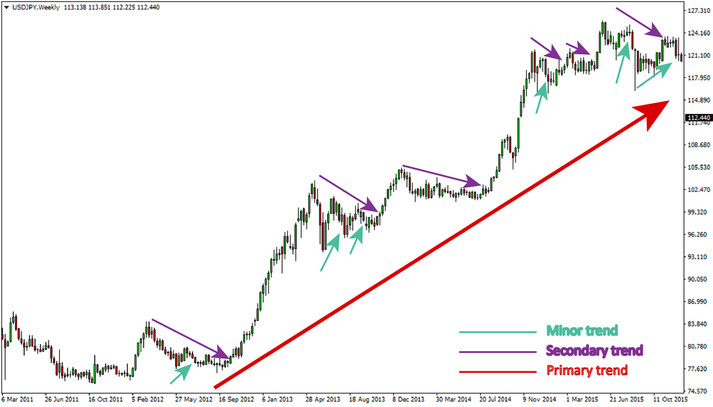The first findings of what is today known as the Dow Theory are awarded to Mr. Charles Dow, after whom the theory was later named. One of the financial journalists who started the Wall Street Journal, Dow came up with certain theories that have laid the foundation for technical analysis as we know it today.
His early findings led Dow to write several editorials on pricing and the general behavior of financial markets.
Later on, Dow’s initial ideas were further developed by some of his followers and were collectively referred to as the “Dow Theory”.
Dow theory provides a valuable explanation for how certain financial markets such as the stock market behave. Whilst the Dow theory was originally constructed based on analysis of the stock market and stock market indices, its application can be successfully extended to other markets as well, like the forex market.
Dow Theory is based on the concept that the financial markets cannot be manipulated by any single factor over the long term since no one underlying factor is significant enough to impact the market in a big way.
Therefore, the general trend of the market is dependent upon a multitude of underlying factors and the way that traders can profit is to be aware of the long-term trend of the broad market and to trade accordingly.
Trading on shorter term trends and movements in the market tends to involve lots of volatility which increases the risk of making losing trades. Over the course of several months or even years however, a trader can improve his chances of trading profitably by focusing on the long-term factors and the long-term trend in the market.
In addition to the long-term trend and the broad market, the Dow Theory also incorporates the concept that the indexes, like the Dow Jones Industrial Average, incorporate and account for every aspect of supply and demand.
Likewise, the prices at which currency pairs trade, are reflective of everything that is happening in the broader forex market, the economy, geopolitics, interest rates and everything else that can affect the exchange rate.
The Primary, Secondary and Minor Trends
Dow theory suggests that there are 3 types of trends in financial markets – a primary trend, a secondary trend and a minor trend.
- The primary trend is the long-term trend of the market that can last over the course of somewhat less than a year and up to 3 years.
- The secondary trend goes against the general long-term trend (primary trend) and it will usually last from 3 weeks and up to 3 months. This means that if the primary trend is a long-term uptrend, the secondary trend is a shorter-term downtrend. Secondary trends represent market corrections or pullbacks and are usually between one-third and two-thirds of the width of the primary trend.
- The minor trend lasts for up to 3 weeks and occurs within the secondary trend. These represent fluctuations that occur over the very short term witin the secondary trends.

Dow Theory applied on a weekly chart of USDJPY
Based on the Dow Theory, traders are encouraged to focus their trading on the long-term trends of the broader market rather than on shorter-term trends and on the movement of single currency pair. By adhering to this theory, forex traders can be aware of the major forces that affect the market and therefore have a better chance to profit from the market.





